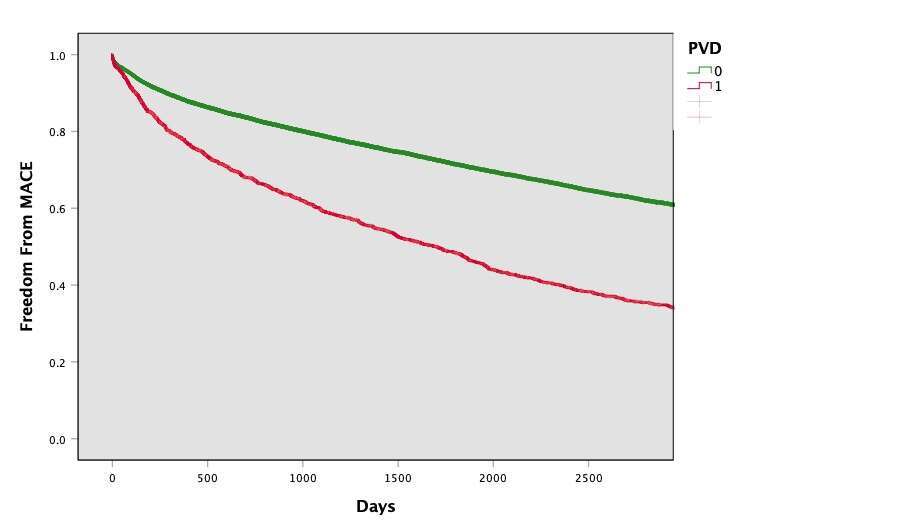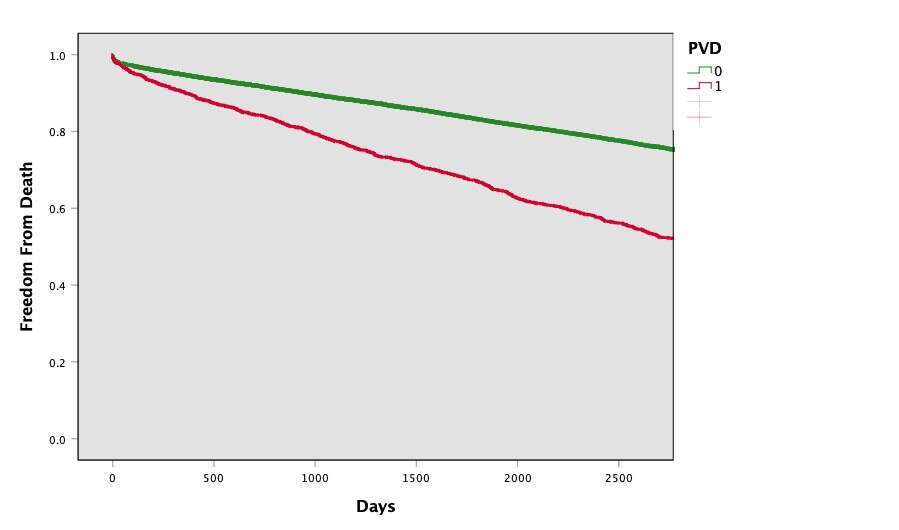
The Independent Impact of Peripheral Arterial Disease on Percutaneous Coronary Intervention
Introduction: Peripheral arterial disease (PAD) is a known risk factor for adverse outcomes in patients undergoing percutaneous coronary intervention (PCI). However, in some studies the risk is associated with confounding factors, and is not an independent risk factor. We sought to examine the independent impact of PAD on a large prospective PCI registry.
Methods: From our large single-center prospective PCI registry, we have analyzed 25,690 patients from the years 2004 to 2018. We examined the proportions of PAD, the influence on unadjusted and adjusted short and long-term outcomes using both regression and propensity-matched analyses.
Results: Patients with PAD (n-1610, 6.3% of total) were older (66.7±10.8 vs. 65.4±12.1, p<0.01), had higher rates of diabetes mellitus (69.3 vs. 46.3%, p<0.01), hypertension (92.1 vs. 76.1%, p<0.01) and renal failure (38.3 vs. 18.2%, p<0.01). There were no differences in the rates of stable vs. acute presentations, but less were treated with the new P2Y12 inhibitors, Prasugrel and Ticagrelor (3.3 vs. 8.0% and 7.9 vs. 11.9%, respectively, p
Conclusions: Peripheral arterial disease constitutes an independent risk factor for adverse outcomes in patients undergoing percutaneous coronary intervention. Further studies are needed to ascertain which therapies may mitigate this risk.



Powered by Eventact EMS